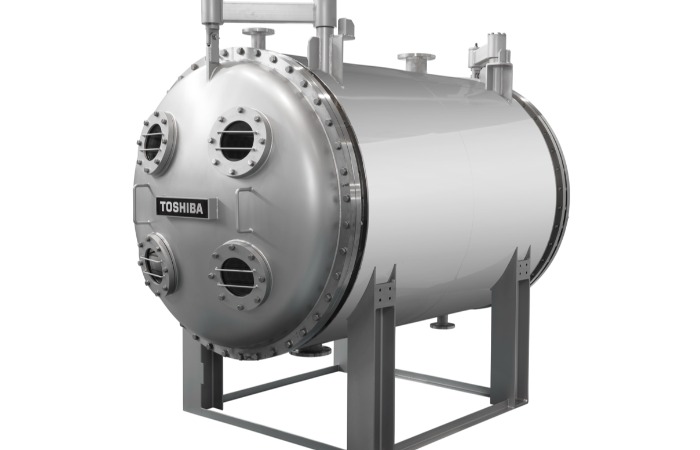
Toshiba bags ozone treatment system contract from L&T
Toshiba Infrastructure Systems & Solutions Corporation (hereafter TISS) announced that they have concluded a contract with Larsen & Toubro (L&T) for three ozone generators at the Chandrawal Water Treatment Plant in Delhi, being executed by Delhi Jal Board. This is one of the largest-scale ozonation systems for a water treatment plant in India. The project is funded by Japan International Cooperation Agency (hereafter JICA) under the Delhi Water Supply Improvement Project.
JICA assisted 477MLD Water Treatment Plant at Chandrawal, being constructed by L&T by replacing the existing water treatment plants, would be equipped with Toshiba’s ozonation systems, having three ozone generators with each 31 kg per hour capacity.
Ozone is a powerful oxidant and has many applications, including dechlorination, deodorisation, inactivation of viruses and bacteria, oxidation of organic and inorganic substances, and a reduction in trihalomethane*1 formation during chlorination. In addition, ozone has hardly any adverse impact on the environment because it simply reverts to oxygen after use.
In Japan, ozone treatment is commonly used at large water treatment plants, especially in urban areas. Toshiba began developing and delivering ozonation systems in the 1970s. Since then, Toshiba has delivered more than 130 ozonation systems for over 100 projects. In recognition of their past strong track record, Toshiba has secured this contract with L&T.
Toshiba Group endeavors to contribute to the establishment of sustainable water recycling systems and the creation of environmentally advanced communities by leveraging its water treatment and solutions technologies cultivated through years of development and extensive experience in overseas EPC*2 and O&M*3 projects.
JICA assisted 477MLD Water Treatment Plant at Chandrawal, being constructed by L&T by replacing the existing water treatment plants, would be equipped with Toshiba’s ozonation systems, having three ozone generators with each 31 kg per hour capacity.
Ozone is a powerful oxidant and has many applications, including dechlorination, deodorisation, inactivation of viruses and bacteria, oxidation of organic and inorganic substances, and a reduction in trihalomethane*1 formation during chlorination. In addition, ozone has hardly any adverse impact on the environment because it simply reverts to oxygen after use.
In Japan, ozone treatment is commonly used at large water treatment plants, especially in urban areas. Toshiba began developing and delivering ozonation systems in the 1970s. Since then, Toshiba has delivered more than 130 ozonation systems for over 100 projects. In recognition of their past strong track record, Toshiba has secured this contract with L&T.
Toshiba Group endeavors to contribute to the establishment of sustainable water recycling systems and the creation of environmentally advanced communities by leveraging its water treatment and solutions technologies cultivated through years of development and extensive experience in overseas EPC*2 and O&M*3 projects.
(*1) ? Chemical compounds in which three of the four hydrogen atoms of methane (CH4) are replaced by halogen atoms. THMs are also environmental pollutants, and many are considered carcinogenic.
(*2) Engineering, procurement, and construction
(*3) Operation and maintenance


 +91-22-24193000
+91-22-24193000 Subscriber@ASAPPinfoGlobal.com
Subscriber@ASAPPinfoGlobal.com